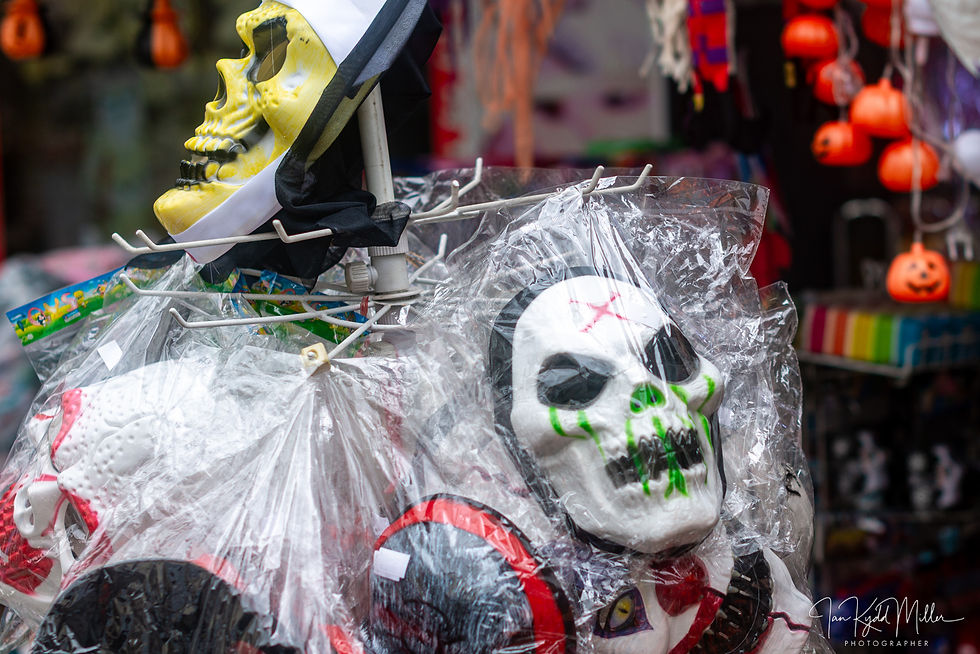Spectacle and Substance: The Power and Responsibility of the Frame
- Ian Miller

- Jul 20
- 3 min read
In every photograph, there’s a tension—between what dazzles and what endures. Between the spectacle that grabs attention and the substance that holds meaning. As photographers, we don’t just compose images. We compose impact. And that impact carries weight.
The frame is not neutral. It’s a decision. A declaration. A responsibility.

🎭 Spectacle: The Spark That Draws Us In
Spectacle is often misunderstood. It’s not inherently shallow. It’s the visual energy that makes an image memorable. The gesture, the light, the tension. It’s what stops the viewer mid-scroll and says: Look closer.
In street photography and reportage, spectacle might be:
A dramatic silhouette against neon haze
A protester mid-shout, framed by riot shields
A child leaping through puddles in monsoon light
These moments carry emotional charge. They’re not just seen—they’re felt. And that feeling is what gives the image its storytelling power.




A dramatic image might stop the viewer in their tracks—but if it lacks context, it quickly becomes hollow. Spectacle without substance is visual sugar: intense, immediate, but fleeting. It grabs the eye but rarely holds the heart.
Think of a powerful protest image, a child in distress, or a moment of public collapse. These scenes carry inherent drama. But unless we know:
Why the subject is there
What led to this moment
Who they are beyond this frame —then we risk turning real lives into symbols. Symbols stripped of agency, nuance, and meaning.
🧠 Substance: The Meaning Beneath the Surface
But spectacle alone isn’t enough. Without context, it risks becoming empty drama. Substance is what roots the image in truth. It’s the why behind the frame.
Substance asks:
What does this image reveal?
Who is being seen—and how?
What story is being told, and whose voice is missing?
Substance is found in restraint. In quiet moments. In the dignity of everyday labor. In the texture of lived experience. Substance is what makes an image ethical. It’s the thread that ties a photograph to lived reality. Without it, spectacle becomes exploitation.
📷 The Frame as a Moral Choice
Every time we compose, we choose:
What to include—and what to exclude
What to amplify—and what to soften
What to preserve—and what to let go
The frame is not just aesthetic. It’s ethical. It shapes how viewers understand the world—and how subjects are remembered.
🎯 Balancing Spectacle and Substance
The most powerful images often live at the intersection:
They draw us in with visual tension
They hold us with emotional truth
They challenge us with ethical depth
Think of Don McCullin’s war portraits, or Mary Ellen Mark’s street scenes. These images are visually arresting—but they also carry moral gravity. They don’t just perform. They testify.
But for that to happen, the photographer must curate with care:
Offer context through captions, sequencing, or narrative
Respect the subject’s voice—even when it’s absent from the frame
Know when drama serves the story—and when it risks hijacking it
🖼️ Our Responsibility as Photographers
We must ask:
Is this image serving the story—or stealing it?
Am I witnessing—or consuming?
Will this frame provoke empathy—or detachment?
Spectacle is a tool. Substance is a compass. And the frame is where they meet.
✍️ Closing Thought
In a world saturated with images, the ones that matter are those that see with care. That balance drama with dignity. That use spectacle not to exploit—but to illuminate.
As photographers, our power lies not just in what we show—but in how we choose to show it.
Let the frame be bold. Let the frame be honest. Let the frame be responsible.






















Comments